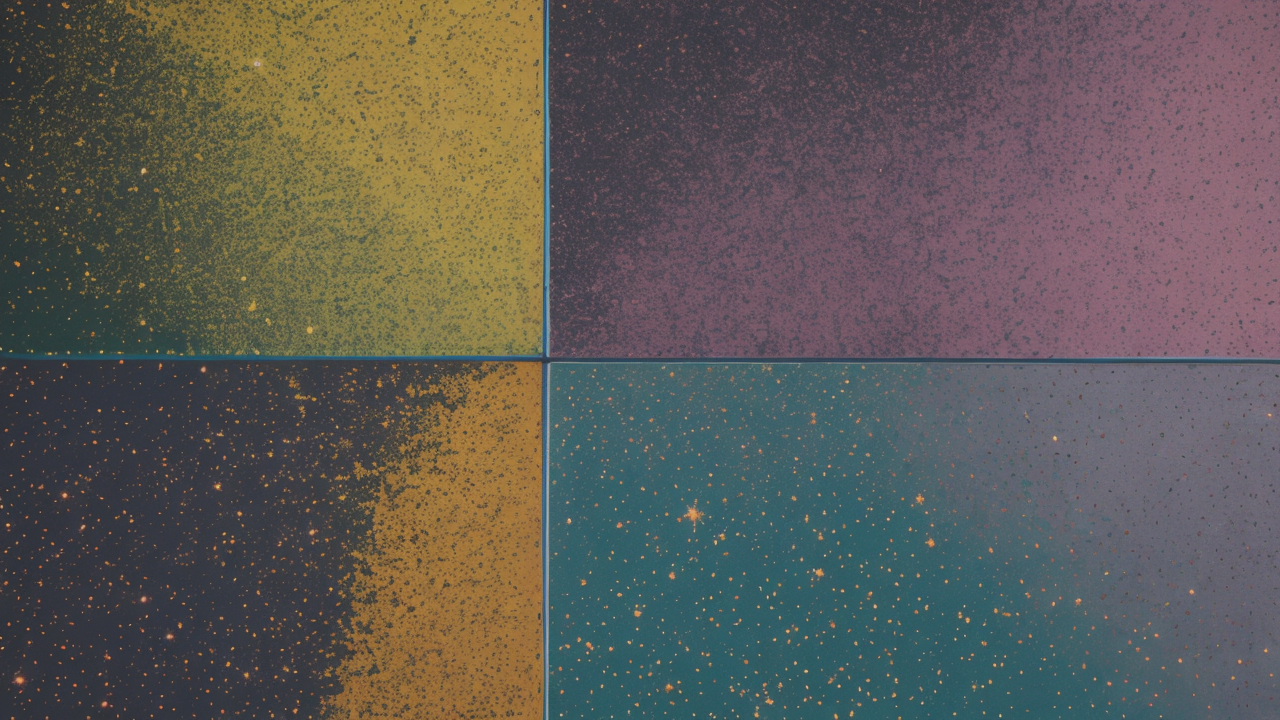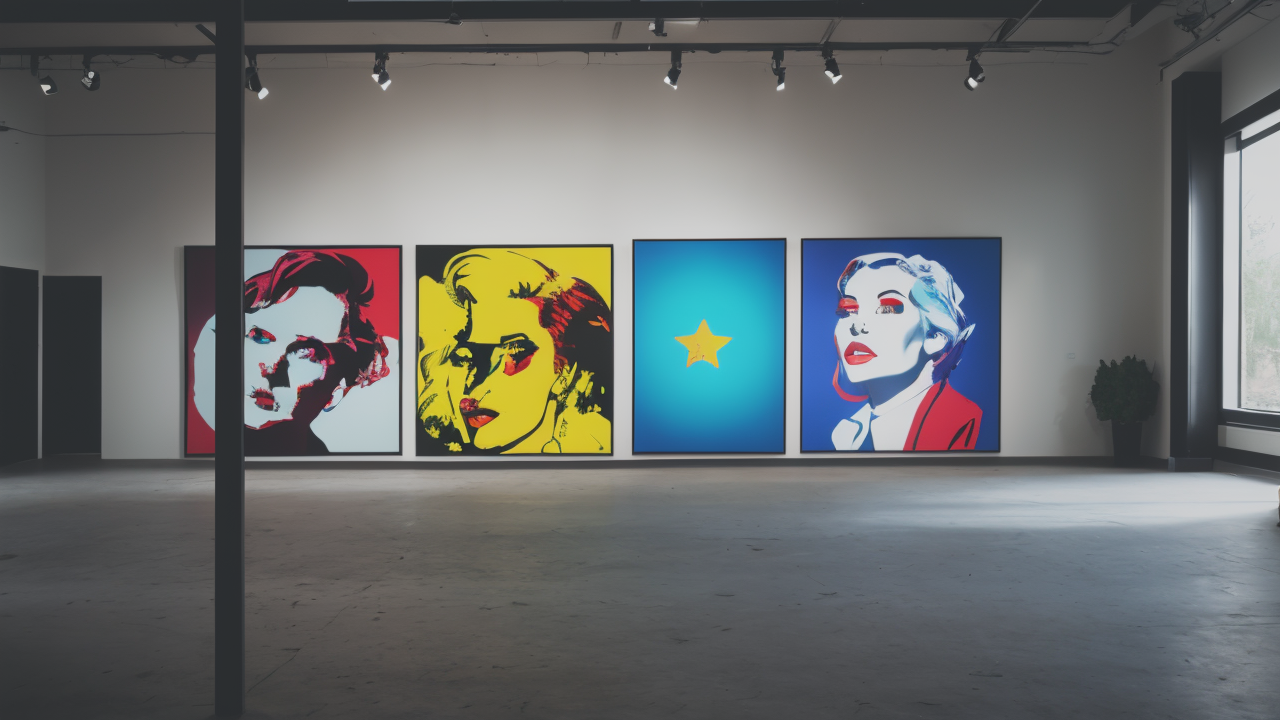
Bridging the Gap: How Digital Technology is Reshaping Contemporary Painting
Understanding the Appeal of Abstract Pop Art
The History and Evolution of Pop Art in the United States
Pop art burst onto the American art scene in the 1950s. It was a bold response to the serious tone of abstract expressionism. Artists like Andy Warhol and Roy Lichtenstein led this new movement.

They drew inspiration from everyday objects and popular culture. Things like comic books, ads, and consumer goods became art subjects. This was a big shift from traditional art themes.
Pop art quickly gained popularity in the 1960s. It reflected the booming consumer culture of post-war America. Over time, pop art began to mix with abstract styles. This blend created what we now call abstract pop art.
Abstract pop art kept the bold colors and cultural references of pop art. But it added non-representational elements. This allowed for more personal expression and interpretation.
Psychological Implications of Color and Patterns in Art
Colors in abstract pop art can have a strong effect on our emotions. Bright, bold hues often make people feel energetic or happy. Softer tones might create a sense of calm or nostalgia.
Patterns also play a big role in how we respond to art. Repeated shapes can create a feeling of order or rhythm. Random designs might spark curiosity or even confusion. The mix of colors and patterns can create interesting visual effects.
These elements tap into our subconscious. They can trigger memories or associations. This is why abstract pop art can feel both familiar and new at the same time. It's a powerful way to connect with viewers on an emotional level.
The use of familiar images in new ways can be both comforting and challenging. It makes us see everyday things in a different light. This dual nature is part of what makes abstract pop art so engaging.
How Abstract Pop Art Resonates with Modern Consumers
Abstract pop art speaks to today's consumers in unique ways. Its bold, vibrant style fits well with our visual culture. We're used to seeing bright colors and patterns in ads and on social media.
The art often includes references to popular culture. This makes it feel relevant and relatable. People can spot familiar brands or icons in the artwork. It's like seeing a bit of their daily life transformed into art.
Abstract pop art also allows for personal interpretation. Viewers can find their own meanings in the work. This appeals to a generation that values individual expression. It makes the art feel more interactive and engaging.
The accessibility of abstract pop art is another key factor. It doesn't require deep art knowledge to appreciate. This openness has helped it gain a wide audience. It bridges the gap between high art and everyday life.
Key Themes in Abstract Pop Art and Their Cultural Impact
Exploring the Role of Pop Culture in Contemporary Art
Pop culture is at the heart of abstract pop art. Artists draw from current trends, icons, and media. They use these elements to comment on society or celebrate shared experiences.

This art form blurs the line between 'high art' and popular culture. It challenges the idea that art must be separate from everyday life. By doing so, it makes art more accessible to a wider audience.
Abstract pop art often reflects or critiques consumer culture. It might celebrate famous brands or question our reliance on them. This dual nature allows it to both entertain and provoke thought.
The use of pop culture elements also creates a shared language. It allows artists to communicate complex ideas through familiar images. This shared understanding helps abstract pop art resonate with diverse audiences.
The Intersection of Fashion and Art in Pop Culture
Fashion and abstract pop art have a close relationship. Many pop artists find inspiration in fashion trends. In turn, fashion designers often use pop art elements in their work.
We see pop art motifs on clothing, bags, and even in store displays. Fashion photography sometimes mimics the bold style of pop art. This crossover brings art into everyday life in a very visible way.
The link between fashion and pop art goes beyond just looks. Both fields react quickly to cultural shifts. They capture the mood of the moment. This makes them powerful reflectors of society's values and desires.
This intersection has created new forms of expression. We now see 'wearable art' and fashion shows that are more like art installations. It's another way that abstract pop art continues to push boundaries and evolve.
Case Studies: Iconic Pieces of Abstract Pop Art
Let's look at some famous works of abstract pop art:
- "Campbell's Soup Cans" by Andy Warhol: This piece turned everyday objects into art icons.
- "Whaam!" by Roy Lichtenstein: It blends comic book style with fine art techniques.
- "Flag" by Jasper Johns: This work merges abstract elements with a familiar symbol.
These pieces show the range of abstract pop art. They use common images in new and surprising ways. Each work had a big impact on both the art world and popular culture. They changed how we think about what can be considered art.
These works also demonstrate key themes in abstract pop art. They explore consumerism, mass media, and national identity. By doing so, they invite viewers to think critically about their culture.
The Future of Pop Art in the United States Market
Innovations Shaping the Direction of Pop Art
Abstract pop art keeps evolving with new ideas and tools. Artists are using 3D printing to create sculptures. Some are making interactive installations that respond to viewers.

Digital tools have changed how artists work. Many use software to design and edit their art. This opens up new possibilities for creativity and precision. It also makes it easier to blend different styles and media.
There's also a trend towards eco-friendly art. Artists are using recycled materials or digital formats. This reflects growing concerns about the environment. It shows how pop art continues to connect with current issues.
Virtual and augmented reality are offering new ways to experience art. These technologies allow for immersive and interactive artworks. They're pushing the boundaries of what's possible in abstract pop art.
The Role of Technology in Pop Culture and Art
Technology is changing both pop culture and abstract pop art. Social media platforms have become new spaces for sharing art. Artists can now reach global audiences instantly.
Digital art and NFTs are becoming more popular. These allow for new ways to create and own art. They're changing how we think about original works and copies.
Some artists are even using AI to help create art. This raises interesting questions about creativity. It shows how technology can be both a tool and a subject for pop art.
The rise of digital tools has also made art more accessible. Anyone with a computer can create and share their work. This democratization of art creation and distribution is changing the landscape of pop art.
Predictions for the Next Big Thing in Abstract Pop Art
Looking ahead, we might see these trends in abstract pop art:
- More use of virtual and augmented reality in artworks
- Increased focus on interactive and participatory art
- Art that addresses urgent social and political issues
- Expansion into new areas like bioart or sound art
The future of abstract pop art will likely be diverse and experimental. It will keep reflecting our changing world. As technology and society evolve, so will this dynamic art form.
We may see more collaborations between artists and tech companies. This could lead to innovative new forms of expression. The line between digital and physical art may continue to blur.
In conclusion, abstract pop art remains a vital part of our culture. It bridges the gap between art and everyday life. Its bold style and cultural relevance keep it popular. As it grows and changes, it will continue to inspire and challenge us.


